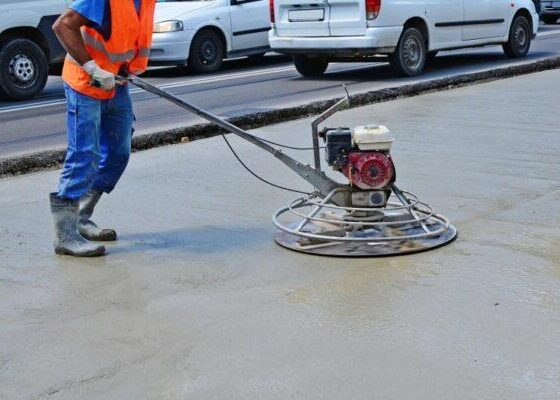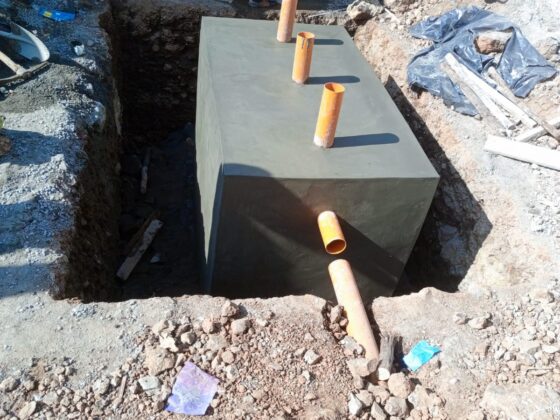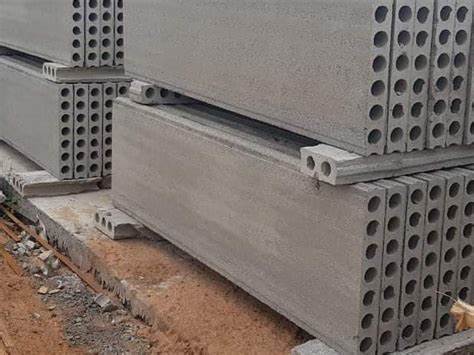While pouring concrete, there are some common problems that people encounter during mixing, placing and even after removing formwork. This article will cover common concrete problems that occur, their implications and how to fix them (if they can be fixed).
During Mixing
1. Wrong mix design
This basically means that at some point during your mixing you realise that you got the sand ballast and cement quantities wrong. The implication of this is usually on the structural strength that will be achieved by the mix. If you erred on the higher side i.e, your mixture has more cement that it should, that is a good but expensive problem. This means your mixture will be stronger but you will probably need more cement than you had anticipated.
If you erred on the lower strength side, i.e, your mix has more aggregates than was planned for, there is cause to worry. This means your concrete will be of a lesser strength than what was designed for.
Solution:
What is the mix being used for? If it’s for a simple slab on grade, you may be able to get away with it. It is important to consult your engineer on the implication of the mix design. If you are doing structural elements like columns and beams, shift to the correct mix when you start a new column. If you are using a drum mix, it is easier to add more cement to balance the mix out. If the mix had already been placed in the formwork, seek advice from the engineer as this may call for either demolition or extra reinforcement depending on the element.
2. Too dry a mix
A mix is considered too dry when the workability is too low. This means that the concrete will not flow the way it is supposed to. You can tell that concrete is too dry if it doesn’t vibrate or trowel easily. A dry mix has an impact on the strength of the mix as the reaction that causes cement to harden requires water and therefore would lead to a slightly lower strength.
What can you do about it? The best time to check the consistency of your mixture is during mixing. If you realise that it is too dry, add cement and then add more water to balance the mixture out. As a rule of thumb, you should never add water directly to a concrete mix. The amount of water to cement ratio (volume) is usually a minimum of 1:1.
3. Too wet a mix
When a mix is too wet, it is high in workability ,i.e, it flows easily. However, this has side effects on the bonding ability of the cement and the aggregates. Too wet a cement will likely cause the aggregates to settle and separate out from the cement. Upon vibration, the cement and finer particles will likely rise to the top leaving the coarse aggregate at the bottom. This will likely result in honey combing at the bottom and cracks on the surface at the top therefore lower strength than was had been designed for.
What can you do about it? If you realise this while doing the mix, you can proportionately add the cement and aggregates to the mix but do not add any water.
4. Concrete not well mixed (Uneven)
When people DIY concrete elements, there is a tendency not to mix concrete well enough to achieve a good even mixture. Note that you should not see sand, or bare stones when placing your concrete. This means that the cement and water paste did not spread inside the mixture well and the stones will not bond with each other. Therefore, this concrete will be hollow inside and will not achieve required strength.
Do not use this concrete. If you notice this while it is still in the mixer, let it run a while longer and add a little water and cement to even it out where possible. Consult a concrete expert if you have access to one. If this mix had already been placed, the concrete element will have to be demolished as it will not have sufficient strength.
5. Expired cement
Not all cement is good cement. Cement has a tendency to lose it’s bonding ability with time and therefore it expires around three months from the date of manufacture. Using old cement will result in concrete elements that do not meet the desired concrete strength. Do not use expired cement! If you find out that you are using expired cement during mixing, add the required good cement in the exact proportion you were to use and assume you had not used any cement before. If the mix had already been done, test the strength of the concrete achieved and consult the structural engineer. It is very likely that you might have to tear down or add more reinforcement to the structure.
During placing
1. Run out of concrete
You had made a calculation for the volume of concrete you would need but things on the ground did not go as planned. Worse still, you are not able to access any more concrete and will have to stop midway on your work.
Don’t worry, you can continue the next day. However, this depends on the type of structure that you are casting. If you are doing a structure that is meant to be extremely watertight care must be taken when performing the following fix.
Solution
Let the newly poured concrete set first before working on it. On the exposed unfinished edge, hack the concrete to create a rough edge that exposes all the aggregate inside. This will facilitate bonding between the two elements. If your concrete was not reinforced, you can add reinforcement bars into the existing concrete. These bars should be at least 2 ft long with one foot drilled inside the existing concrete, and the other part left outside to bond with the incoming concrete. Wet the area before pouring the new batch and trowel to finish.
This is the first part of this article. Other problems during pouring such as over vibration and under vibration, cracking, honeycombing and other finishing problems will be covered in part two. Read more about mix designs here, if you are interested in finding out which concrete mix design/Concrete class to use for your project.
I hope this read has been insightful. Build Wisely!










